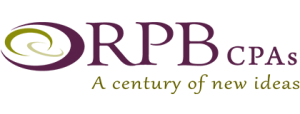Non-Profit Entity Newsletters
Are you ready for the upcoming audit season?
An external audit is less stressful and less intrusive if you anticipate your auditor’s document requests. Auditors typically ask clients to provide similar documents year after year. They’ll accept copies or client-prepared schedules for certain items, such as bank reconciliations and fixed asset ledgers. To verify other items, such as leases, invoices and bank statements, they’ll want to see original source documents. What does change annually is the sample of transactions that auditors randomly select to test your account balances. The element of surprise is important because it keeps bookkeepers honest. Anticipate questions Accounting personnel can also prepare for audit
5 ways nonprofits can prepare for an audit
No not-for-profit looks forward to annual audits. But regular maintenance and preparation specific to an impending audit can make the process less disruptive. We recommend taking the following steps. 1. Reconcile routinely You shouldn’t wait until audit time to reconcile accounts — for example, cash, receivables, pledges, payables, accruals and revenues. Reconcile general ledger account balances to supporting schedules (bank reconciliation, receivables and payable aging) monthly or at least quarterly. And don’t forget to reconcile database information provided and maintained by nonaccounting departments, such as contributions, events revenue, registration revenue and sponsorships. 2. Prepare supporting documentation Collect all supporting documentation
Do you know the new accounting rules for gifts in kind?
If your not-for-profit organization accepts contributions of nonfinancial assets, such as land, services and supplies, you should know about Financial Accounting Standards Board (FASB) rules approved last year. Accounting Standards Update (ASU), Not-for-Profit Entities (Topic 958): Presentation and Disclosures by Not-for-Profit Entities for Contributed Nonfinancial Assets is intended to increase transparency around gifts in kind. Inflated values The updated rules were generated in response to concerns about U.S. wholesale market prices being used to determine the value of donated pharmaceuticals that can’t legally be sold in the United States. A donor, for example, could contribute such drugs for use only
Need another PPP loan for your small business? Here are the new rules
Congress recently passed, and President Trump signed, a new law providing additional relief for businesses and individuals during the COVID-19 pandemic. One item of interest for small business owners in the Consolidated Appropriations Act (CAA) is the opportunity to take out a second loan under the Paycheck Protection Program (PPP). The basics The CAA permits certain smaller businesses who received a PPP loan to take out a “PPP Second Draw Loan” of up to $2 million. To qualify, you must: Employ no more than 300 employees per physical location, Have used or will use the full amount of your first PPP
Gifts in kind: New reporting requirements for nonprofits
On September 17, the Financial Accounting Standards Board (FASB) issued an accounting rule that will provide more detailed information about noncash contributions charities and other not-for-profit organizations receive known as “gifts in kind.” Here are the details. Need for change Gifts in kind can play an important role in ensuring a charity functions effectively. They may include various goods, services and time. Examples of contributed nonfinancial assets include: Fixed assets, such as land, buildings and equipment, The use of fixed assets or utilities, Materials and supplies, such as food, clothing or pharmaceuticals, Intangible assets, and Recognized contributed services. Increased scrutiny by
Levels of assurance: Choosing the right option for your business today
The COVID-19 crisis is causing private companies to re-evaluate the type of financial statements they should generate for 2020. Some are considering downgrading to a lower level of assurance to reduce financial reporting costs — but a downgrade may compromise financial reporting quality and reliability. Others recognize the additional risks that work-from-home and COVID-19-related financial distress are causing, leading them to upgrade their assurance level to help prevent and detect potential fraud and financial misstatement schemes. When deciding what’s appropriate for your company, it’s important to factor in the needs of creditors or investors, as well as the size, complexity
External audits offer many benefits to nonprofits
Your nonprofit organization may be required to hire an independent outside CPA to audit its books, depending on its annual gross receipts and other factors. Even when external audits aren’t mandated, however, they’re often recommended. These audits can provide assurance to donors and other stakeholders that your organization is operating with integrity and within acceptable accounting guidelines. Internal audits Most nonprofits conduct internal audits on a regular basis, perhaps quarterly or annually. These audits are typically performed by a board member or a member of the organization’s staff. The objective is to review the organization’s financial statements, accounting policies and
Is it time to outsource finance and accounting?
Outsourcing may appeal to organizations that are currently struggling with mounting overhead costs during the COVID-19 crisis. By outsourcing, you convert certain fixed overhead costs associated with compensating and supporting employees into variable costs that can be scaled back in an economic downturn — or dialed up in times of growth and transition. One department that’s ripe with outsourcing opportunities is finance and accounting. There are many external providers of such specialized, time-consuming services as payroll processing, tax preparation and bookkeeping. You can even outsource your controller or CFO function. But do the benefits of outsourcing these tasks outweigh the
Conflict-of-interest policies are too important for nonprofits to neglect
Does your not-for-profit organization have a conflict-of-interest policy in place? Do your board members, trustees and key employees understand how the policy affects them? If you answer “no” to either (or both) of these questions, you have some work to do. A duty Nonprofit board officers, directors, trustees and key employees all must avoid conflicts of interest because it’s their duty to do so. Any direct or indirect financial interest in a transaction or arrangement that might benefit one of these individuals personally could result in bad publicity, the loss of donor and public support, and even the revocation of
Management letters: Have you implemented any changes?
Audited financial statements come with a special bonus: a “management letter” that recommends ways to improve your business. That’s free advice from financial pros who’ve seen hundreds of businesses at their best (and worst) and who know which strategies work (and which don’t). If you haven’t already implemented changes based on last year’s management letter, there’s no time like the present to improve your business operations. Reporting deficiencies Auditing standards require auditors to communicate in writing about “material weaknesses or significant deficiencies” that are discovered during audit fieldwork. The AICPA defines material weakness as “a deficiency, or combination of


